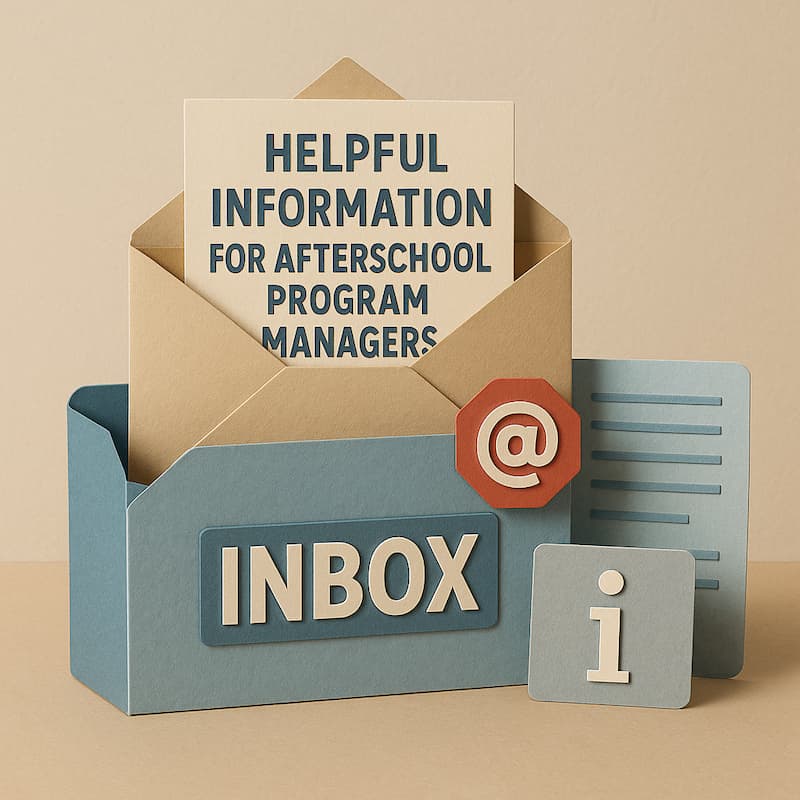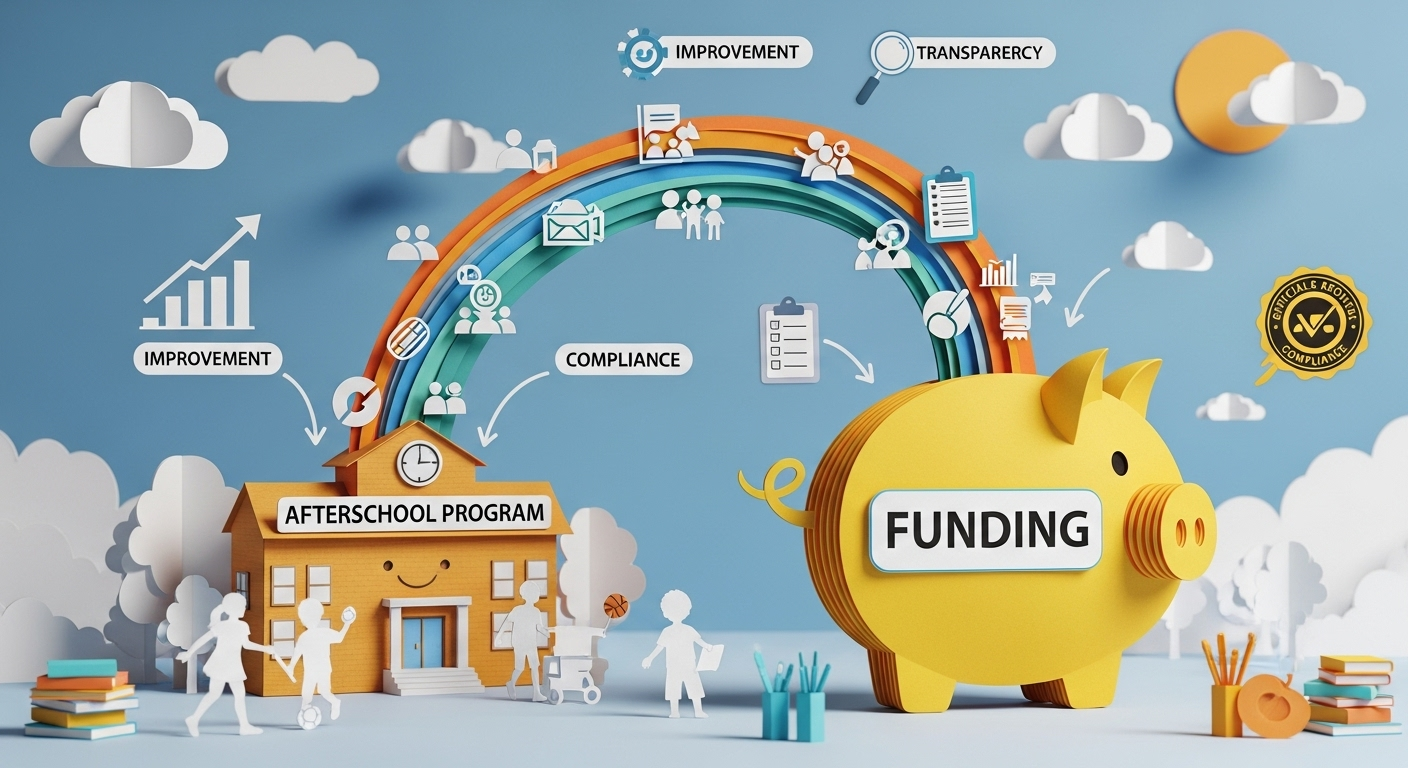The CALPADS Afterschool Data Implementation Roadmap
The 2025-2026 academic year brings important developments for California Local Educational Agencies (LEAs) regarding CALPADS reporting for afterschool programs. We understand that managing state requirements is a significant responsibility. The California Longitudinal Pupil Achievement Data System is central to K-12 educational data, and its requirements are evolving, especially with the anticipated formal integration of Expanded Learning Opportunities Program (ELOP) data. For afterschool program managers, this necessitates proactive planning for a smooth transition. Staying ahead ensures compliance, secures funding, and maintains high-quality educational experiences. This roadmap helps education administrators and staff prepare effectively. We will explore strategies and tools to simplify these processes, allowing more focus on enriching student lives. This is our shared effort to prepare for upcoming changes, ensuring our afterschool programs continue to thrive and support every student.
Anticipating CALPADS Evolution for Afterschool Data in 2025-2026
Looking toward the 2025-2026 school year, we foresee key CALPADS shifts affecting afterschool data, how it’s compiled, and what it means. A significant development is the expected formal incorporation of ELOP data tracking, signaling more standardized and potentially detailed submissions for ELOP student registration and participation. This often means increased scrutiny of collected data.
Another potential change is greater reporting convergence for ELOP, After School Education and Safety (ASES), and 21st Century Community Learning Centers (21st CCLC) programs, as the California Department of Education encourages viewing them as a comprehensive program. This could lead to harmonized CALPADS reporting, possibly requiring programs to adapt to more uniform data management.
Consequently, new data elements or program codes specific to expanded learning may emerge. Diligently monitoring California Department of Education communications, particularly CALPADS Update Flashes, will be important. Furthermore, proposed ELOP funding increases and broadened eligibility will mean more students qualify, increasing the volume of participation and attendance data LEAs must report. This scaling emphasizes the need for efficient data systems. This evolution underscores the importance of robust data collection and effective tools to manage this increased data volume.
Essential Preparation Steps for LEAs
Preparation begins with a comprehensive assessment of current data management practices. LEAs should evaluate their existing systems for collecting, storing, and reporting afterschool program data. This includes reviewing how student enrollment, attendance, and program participation information flows from afterschool programs to district Student Information Systems and ultimately to CALPADS.
Next, diligently monitor all communications from the California Department of Education. Subscribing to CALPADS Update Flashes and noting CDE training schedules provides timely information on new file specifications, revised codes, and specific guidance. Pay close attention to updates to the CALPADS File Specifications (CFS), Code Sets, and Data Guide for the 2025-2026 cycle (find system docs from the CDE here).
Understanding revised data element requirements is another key step. Once new documentation is available, program administrators and data staff must conduct a detailed review. Focus on the Student Program (SPRG) file for new or modified Education Program Codes related to ELOP, ASES, and 21st CCLC. This foresight ensures your team is prepared to collect and report necessary student information accurately, supporting effective program administration and student access to expanded learning.
Aligning Internal Systems for Future CALPADS Requirements
Effective CALPADS reporting depends on seamless integration between afterschool program management systems and district Student Information Systems. LEAs should prioritize establishing or enhancing these connections to ensure accurate data flow. This integration reduces manual data entry, minimizes errors, and ensures consistency between program records and official student data.
Consider implementing automated data validation procedures that can identify discrepancies before they reach CALPADS submissions. These systems can flag issues such as missing student identifiers, incorrect program dates, or attendance anomalies. Early detection allows for timely corrections and maintains data integrity throughout the reporting cycle.
Staff training represents another critical component of system alignment. Ensure that both afterschool program staff and district data coordinators understand their roles in the CALPADS reporting process. Regular training sessions and clear documentation of procedures help maintain consistency and accuracy across all data management activities.
Leveraging Technology for Streamlined Reporting
Modern afterschool program management platforms offer sophisticated features designed to support CALPADS compliance. These systems can automate many aspects of data collection, validation, and reporting, significantly reducing the administrative burden on LEA staff. Features such as real-time attendance tracking, automated enrollment management, and integrated reporting tools streamline the entire process.
Beyond CALPADS tools, internal reporting features within your afterschool program management software are powerful. Modern systems often include tools for running data checks throughout the year. This allows proactive identification and correction of issues like incorrect student IDs, missing program dates, or inconsistent attendance records long before the official submission window. For instance, regularly generating internal reports on enrollment versus attendance can highlight discrepancies early in the cycle. Establishing these robust validation routines as part of your regular workflow ensures information sent to CALPADS is accurate, leading to smoother certification and reliable data for decision-making and student support. This diligence helps LEA staff maintain data integrity effectively.
Future Proofing Your Data Management Approach
Leveraging adaptable, specialized afterschool program management systems is key for LEAs to navigate the 2025-2026 CALPADS changes. As reporting requirements evolve, particularly for ELOP data, a flexible system is invaluable. These systems offer features designed for expanded learning program complexities.
Building sustainable data management practices ensures long-term success regardless of changing requirements. This includes establishing clear procedures, maintaining comprehensive documentation, and creating redundancy in critical processes. Regular review and refinement of these practices helps identify opportunities for improvement and ensures continued alignment with state requirements.
Collaborative Planning for Implementation Success
Successful CALPADS implementation requires collaboration between multiple stakeholders within the LEA. District administrators, afterschool program coordinators, data managers, and IT staff must work together to ensure seamless integration and accurate reporting. Regular meetings and clear communication channels facilitate this collaboration.
Engaging with external resources and professional networks also supports implementation success. Participating in professional development opportunities, attending CDE training sessions, and connecting with other LEAs facing similar challenges provides valuable insights and best practices.
Monitoring and Continuous Improvement
Once implementation begins, ongoing monitoring and evaluation ensure continued success. Regular assessment of data quality, reporting accuracy, and system performance helps identify areas for improvement. Feedback from staff and stakeholders provides valuable insights into the effectiveness of implemented solutions.
Establishing metrics for success and regularly reviewing progress against these benchmarks helps maintain focus on key objectives. This data-driven approach supports continuous improvement and ensures that CALPADS reporting processes remain effective and efficient.
By following this implementation roadmap, LEAs can successfully navigate the evolving CALPADS requirements while maintaining focus on their primary mission of providing high-quality educational opportunities for all students. Proactive planning, effective use of technology, and collaborative approaches ensure that afterschool programs continue to thrive while meeting all compliance requirements.








